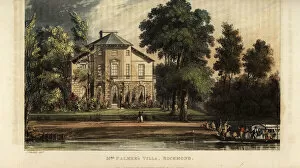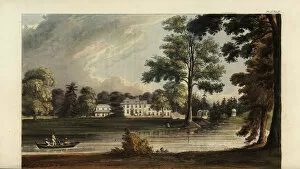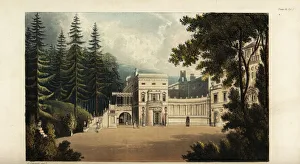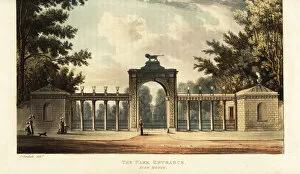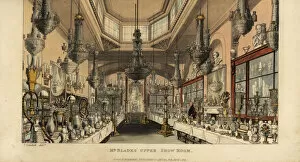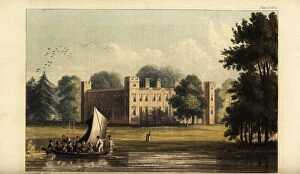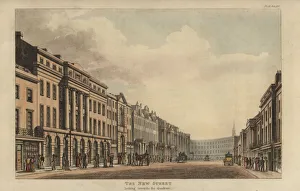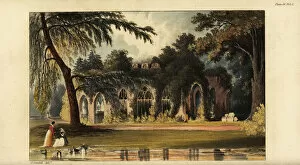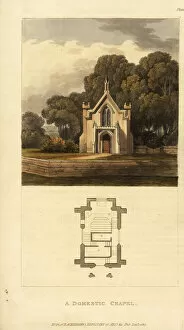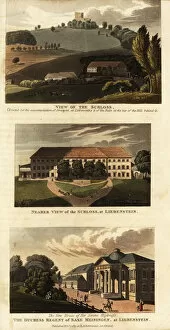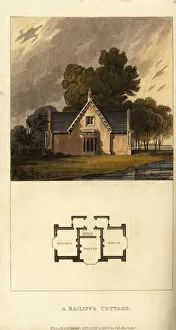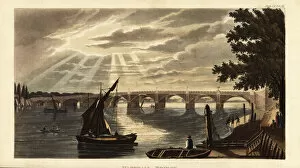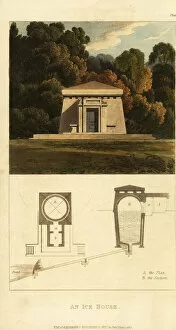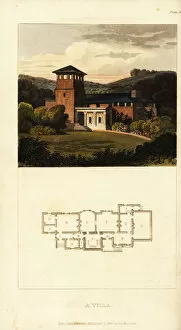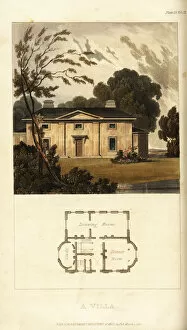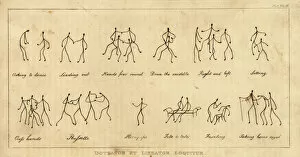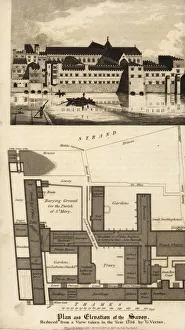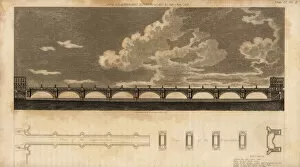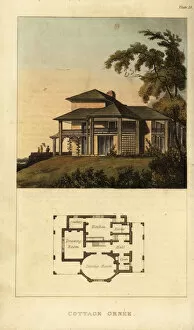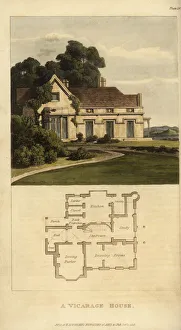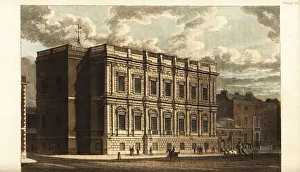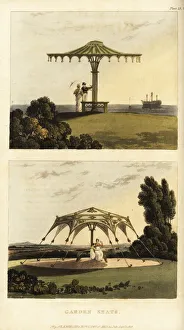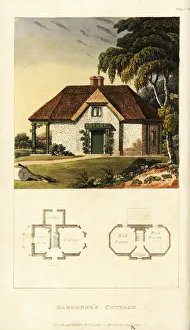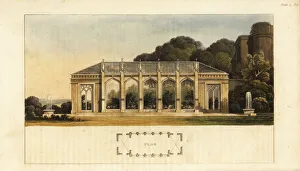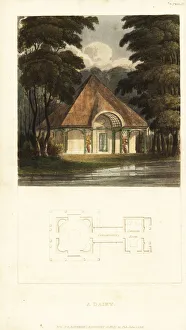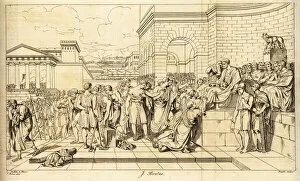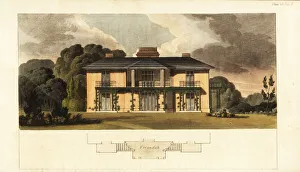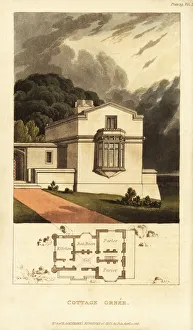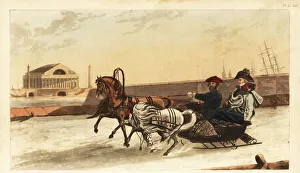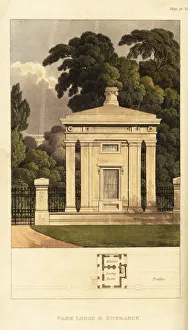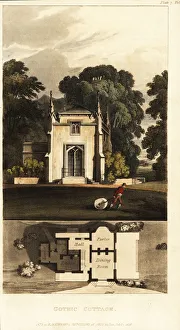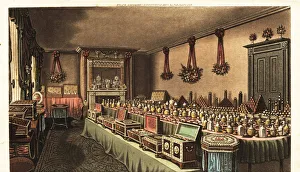Regency Architecture Collection (page 6)
Regency architecture is a style of British architecture that emerged during the early 19th century
525 items
All Professionally Made to Order for Quick Shipping
-
Regency Architecture Collection
Regency architecture is a style of British architecture that emerged during the early 19th century. It was heavily influenced by the Neoclassical movement, which sought to revive the grandeur and simplicity of ancient Greek and Roman buildings. Regency buildings often feature large columns, arches, and pediments as well as decorative details such as balustrades, cornices, and fanlights. The style was popularized by architect John Nash who designed many iconic London landmarks such as Buckingham Palace and Regent's Park. Regency architecture is characterized by its symmetry and balance with an emphasis on proportionality. Its use of classical elements combined with modern materials make it a timeless style that can still be seen in many cities around the world today.
+
Our beautiful Wall Art and Photo Gifts include Framed Prints, Photo Prints, Poster Prints, Canvas Prints, Jigsaw Puzzles, Metal Prints and so much more
The Regency Architecture collection from Media Storehouse is a stunning selection of wall art and framed prints that showcase the architectural styles popular during the Regency era in England, which spanned from 1811 to 1820. This period was marked by a revival of classical architecture, with an emphasis on symmetry, proportion, and grandeur. Our collection features a range of iconic buildings such as Buckingham Palace, The Royal Pavilion in Brighton, and St. Pancras Station in London. Each print captures the intricate details and ornate designs that define this style of architecture. Whether you're looking to add some historical charm to your home or office decor or simply appreciate the beauty of classic architecture, our collection offers something for everyone. With high-quality printing techniques used on premium materials like fine art paper and canvas, these prints are sure to make a statement wherever they are displayed.
+
What are Regency Architecture (Styles Architecture) art prints?
Regency Architecture art prints are a collection of artistic representations of the architectural styles that were popular during the Regency period in England, which spanned from 1811 to 1820. This era was marked by an increase in wealth and prosperity, leading to a surge in construction and renovation projects. The architecture of this time is characterized by its elegance, symmetry, and use of classical motifs such as columns and pediments. The Regency style drew inspiration from ancient Greek and Roman designs while incorporating contemporary elements such as Gothic Revival details. These prints showcase the grandeur of buildings like Buckingham Palace, Brighton Pavilion, and St. James's Palace. These art prints offer an opportunity for enthusiasts to appreciate the beauty of Regency architecture without having to travel or visit these historic sites themselves. They can be used for decorative purposes in homes or offices or serve as educational tools for students studying architecture or history.
+
What Regency Architecture (Styles Architecture) art prints can I buy from Media Storehouse?
We offer a wide range of Regency Architecture art prints that are perfect for adding an elegant touch to any room. You can choose from a variety of styles, including Georgian, Gothic Revival, and Neoclassical. These prints feature stunning examples of Regency architecture such as grand country houses, townhouses, and public buildings. One popular print is the Royal Pavilion in Brighton which was built by John Nash in the Indo-Saracenic style. Another option is the iconic Bath Assembly Rooms designed by John Wood the Younger with its impressive ballroom and ornate ceiling decorations. If you prefer something more understated, there are also prints featuring smaller-scale Regency properties such as charming cottages or picturesque village scenes. All of these prints are available in a range of sizes and finishes to suit your individual preferences. Whether you're looking for a statement piece or something subtle to complement your decor, we have plenty of options to choose from.
+
How do I buy Regency Architecture (Styles Architecture) art prints?
To buy Regency Architecture art prints from Media Storehouse, you can browse our extensive collection of artwork online. Simply search for "Regency Architecture" or "Styles Architecture" in the search bar to find a variety of options. Once you have found a print that you like, select the size and format that suits your needs. You can choose between different paper types such as photographic paper or fine art paper. You may also opt for canvas prints if you prefer a more textured finish. After selecting your preferred medium, add the print to your cart and proceed to checkout. At checkout, enter your shipping information and payment details to complete the purchase process. We offer secure payment options such as credit card payments or PayPal. Once your order is confirmed, it will be printed and shipped directly to your address within a few business days depending on where you are located. Enjoy displaying beautiful Regency Architecture art prints in your home or office.
+
How much do Regency Architecture (Styles Architecture) art prints cost?
Regency Architecture art prints vary in cost depending on the size, framing options and quality of the print. We offer a wide range of Regency Architecture art prints that cater to different budgets and preferences. Our collection includes high-quality reproductions of famous Regency buildings such as Brighton Pavilion, Bath Assembly Rooms and Royal Crescent. We understand that our customers have unique tastes and requirements when it comes to purchasing art prints. That's why we offer various sizes ranging from small to large formats with or without frames. We also provide different paper types such as matte or glossy finishes for an optimal viewing experience. Our Regency Architecture art prints are perfect for anyone who appreciates classic architecture or wants to add a touch of elegance to their home decor. With our extensive selection, you're sure to find something that fits your style and budget.
+
How will my Regency Architecture (Styles Architecture) art prints be delivered to me?
Your Regency Architecture art prints will be delivered to you in a safe and secure manner. We take great care in packaging our products to ensure they arrive at your doorstep undamaged. Your prints will be carefully rolled and placed into a sturdy cardboard tube for protection during transit. We use trusted delivery partners who are experienced in handling delicate items such as artwork. You can expect your package to arrive within the estimated delivery timeframe provided when placing your order. Once you receive your package, simply unroll the prints and allow them to settle before framing or displaying them as desired. We hope that you enjoy your Regency Architecture art prints and appreciate the beauty of this historic architectural style captured through our collection of high-quality images.

